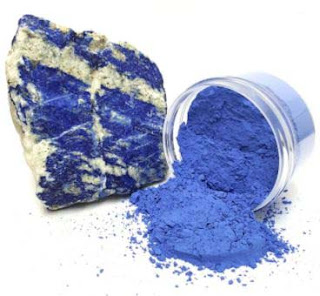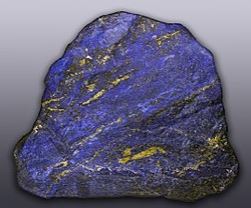Varnish is a clear, colorless solution containing a solvent and either a natural or synthetic resin that has been used for centuries on oil paintings and more recently on acrylic paintings.
Varnishing your paintings adds a layer of protection and can measurably affect its appearance.
Air contains a variety of pollutants that in time will cling to the surface of a painting and will alter the colors. Besides the air, your painting will be susceptible to moisture, including humidity, liquids, dust, and other contaminants. Most conservators recommend varnishing paintings because environmental pollutants are more easily removed from the varnish layer than from paint layers. Some prefer varnishes containing synthetic resins, which allow for the most reversible, least invasive conservation treatments. Some artists prefer more traditional varnishes containing natural resins such as damar and mastic, which are slower to dry than synthetic resin varnishes and, therefore, are more easily applied with a brush. But there are drawbacks to using traditional varnishes.
When you apply varnish, you will notice the color intensifies. A gloss varnish will deepen the color, while a satin finish will slightly strengthen the appearance.
Applying varnish also helps to create a unified surface. Sometimes a finished painting will have both shiny and dull areas. This variation can happen for several reasons.
Mixing paint brands-Different brands of paint use different ratios of ingredients (binder/pigment) and the types of fillers may differ. This inconsistency results in different levels of sheen.
Using Medium-Some oil painters use medium to control the viscosity of their paint. Some mediums, like Liquin, are glossy. If you have a different amount of medium in each stroke, you are likely to end up with an uneven surface.
Glazing - A glazed layer of paint will dry glossy. If you glaze only parts of your painting you should varnish it to even out the surface sheen.
When to Varnish
How to decide when it is safe to varnish is tricky. Drying rates vary greatly based on the thickness of the paint and on the temperature and humidity levels they are exposed to.
There’s no hard and fast rule. Thicker paint will dry slower while thin layers of paint will dry faster. The fingernail test is one way to determine if your painting is dry enough to varnish. Press a fingernail on the paint. If it can leave a mark, the paint is not dry enough to varnish. If it doesn’t leave a mark, like a dent, then you can varnish it. If your style of painting is impasto, you may have to wait a year to varnish.
Types of Varnish
There are several types of varnishes on the market. They include traditional natural varnishes both hard and soft, and synthetic varnishes.
Traditional Natural Varnishes
Traditional natural varnishes include Dammar, Copal, Amber and Mastic.
Copal and Amber varnishes, referred to as hard varnishes, were used by the Old Masters.
They are a golden in color and give a rich glossy and enamel-like appearance. However, they are susceptible to cracking, extensive yellowing and become increasingly difficult to remove from painting over time.
True hard Copal and Amber varnishes are rare in the world today, though some specialist manufacturers still offer unique historically-accurate painting varnishes.
Dammar (can be spelled Damar) and Mastic varnishes are referred to as soft varnishes because they dissolve in solvents such as turpentine and mineral spirits. They can be removed from an oil painting surface without greatly affecting the paint layers below.
Dammar varnish comes from tree resin and is paler than Copal but has great viscosity and is still used commonly in oil painting today. However, Dammar (because it’s a natural resin) has a tendency to yellow over time. It also becomes more brittle as it dries, leaving your canvas more likely to crack if the canvas is disturbed.
Synthetic Varnishes
Some examples of synthetic varnishes are MSA, Gamvar, and Alkyd Synthetic Resins.
Synthetic varnishes offer a lot of advantages over the traditional natural varnishes including:
- A clear coat on the first application that stays clear over time, therefore non-yellowing and more flexible.
- Are available in liquid or aerosol form, are readily available and cost-effective and they come in a variety of sheens, such as matte, satin or gloss.
- They allow for relatively easy removal with less risk to underlying paint layers.
Alkyd Synthetic Resins such as Schmincke Picture Varnish provide a glossy, non-yellowing, colorless, highly resistant topcoat. but they must be applied after eight to twelve months.
Mineral Spirit Acrylic varnishes (MSAs) have a high molecular weight and tend to offer a better protective surface, have greater elasticity and more resistance to blooming. Must be applied after eight to twelve months.
If You Can’t Wait
If you need to show or sell a painting before it is completely dry, you can use retouch varnish. Retouch varnish offers some protection and unification of color, though it’s not as strong a coating as a regular varnish. Some recent varnishes also have the great advantage of being able to be applied when the painting is just touch dry – rather than waiting for the painting to be fully cured.
Gamblin makes a varnish called Gamvar which has been developed specifically for this purpose.
Drying Time
Drying times of varnishes vary, depending on the absorbency of paint, ground and substrate layers. Paintings on panel supports, for instance, might absorb less varnish and therefore dry more slowly. At any rate, try to avoid any dust settling into the fresh varnish layer. Place your varnished painting away from drafts and if possible, keep it covered.
Varnish Need Not be
Permanent
Varnishing a painting need not be permanent. After a varnished painting has lost its luster over time, the varnish layer can easily be removed, taking the built-up of pollutants and particles with it. (As a general rule, varnish should be removed and reapplied every fifty years or so.)
Workshop News
The first week of class went really well. The room is quite large and the supplies were well organized so that all of the students had everything they needed at their table. The door was open and the fans drew air to the outside. Everyone was careful and wore their masks. As I worked, my actions were taped and transmitted on a large screen. Here’s a photo of the first class at Artsplace. There are eight students, each with their own table.
Everyone seemed to be enjoying their time back in the classroom. It sure feels good to be teaching again!
 Definition and Composition
Definition and Composition















































